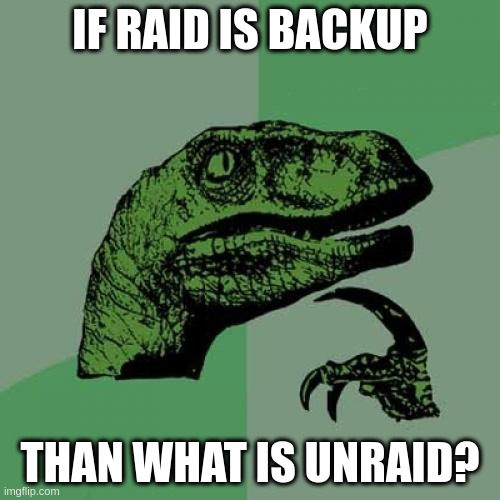My AM5 system doesn't post with 128GB of 5600 DDR5 at higher than 4400 at JEDEC timings and voltage. 2 DIMMs are fine. 4 DIMMs... rip. So I'd say the present of DIMMs is already a bit shaky. DIMMs are great for lots of cheap RAM. I paid a lot less than what I'd have to pay for the equivalent size of RAM in a Framework desktop.
avidamoeba
I also don't like System76 hardware, but they're doing this software work that they're hoping to recoup with hardware sales. If this becomes a good replacement for GNOME, for me it would be worth paying whatever they'd make from a laptop. But I ain't buying their laptop because I don't like it and I don't need it. So I'm gonna give them the difference somehow. 😂
If this becomes a good replacement for GNOME I'd pay the profit margin of a System76 laptop for it.
Right so I guess the question of 3 is whether it means 3 backups or 3 copies. If we take it literally - 3 copies, then it does protect from user error only. If 3 backups, it protects against hardware failure too.
E: Seagate calls them copies and explicitly says the implementer can choose how the copies are distributed across the 2 media. The woodchipper scenario would be handled by the 2 media requirement.
Hm I wonder why snapshots wouldn't satisfy 3. Copies on the same disk like /file, /backup1/file, /backup2/file should satisfy 3. Why wouldn't snapshots be equivalent if 3 doesn't guard against filesystem or hardware failure? Just thinking and curious to see opinion.
- Primary ZFS pool with automatic snapshots
- Provides 3+ copies of the files via snapshots (3)
- Secondary ZFS pool at a different location replicates the primary
- Provides more copies of the files (3)
- Provides second media (2)
- Is off-site (1)
Does this make sense?
The answer for doing this on your PC is Docker with one of the open source containers built for this. For example this.
If you want a dedicated machine, your Pi would do just fine but you'll have to connect your storage where the downloads are to it. You should still use Docker for that since it's the easiest setup and it would take care of important corner cases such as blocking seed when the VPN is down.

If Raid is backup, then Unraid is?
Try ZFS send if you have ZFS on the other side. It's insane. No file IO, just snap and time for the network transfer of the delta.
Every hour. Could do it more frequently if needed.
It depends on how resource intensive the backup process is.
Consider an 800GB Immich instance.
Using Duplicity or rsync takes 1 hour per backup. 99% of the time is spent in traversing the directory structure and checking which files have changed. 1% is spent into transferring the difference to the backup. Any backup system that operates on top of the file system would take this much. In addition, unless you're using something that can take snapshots of the filesystem, you have to stop Immich during the backup process in order to prevent backing up an invalid app state.
Using ZFS send on the other hand (with syncoid) takes less than 5 seconds to discover the differences and the rest of the time is spent on the data transfer, at 100MB/s in my case. Since ZFS send is based on snapshots, I don't have to stop the service either.
When I used Duplicity to backup, I would backup once week because the backup process was long and heavy on the disk array. Since I switched to ZFS send, I do it once an hour because there's almost no visible impact.
I'm now in the process of migrating my laptop to ZFS on root in order to be able to utilize ZFS send for regular full system backups. If successful, eventually I'll move all my machines to ZFS on root.
What's the second B stand for?
You get fast memory as a result. If you don't care about the fast memory, there's no good reason to buy this, with their motherboard. There's a use case this serves which can't be served by traditional slotted memory and the alternative is to buy 4-5 NVIDIA 3090/4090/5090. If you want that use case, then this is a pretty good deal.